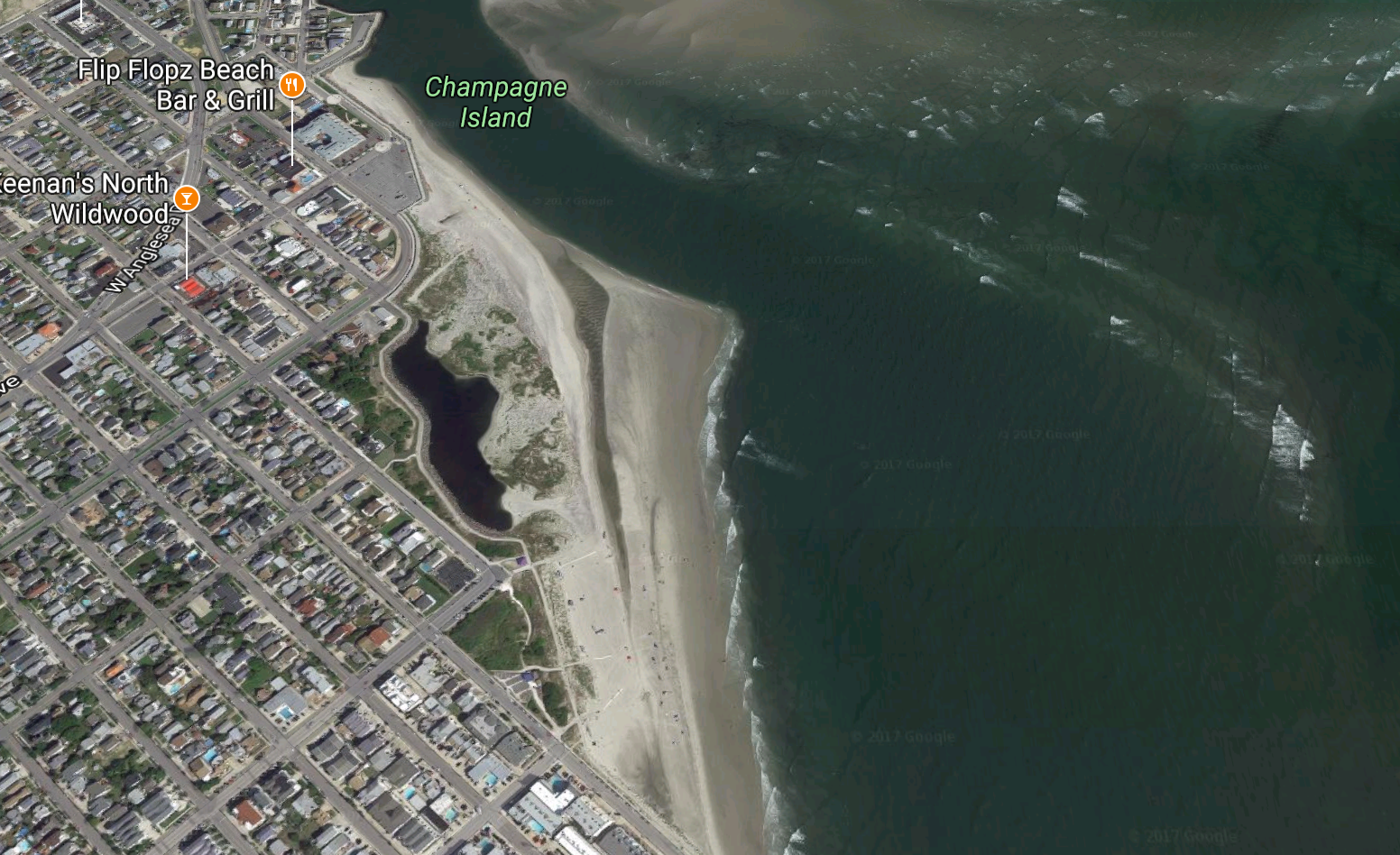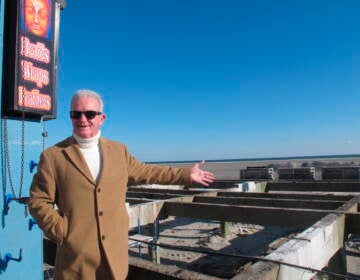Judge dismisses lawsuit over N.J. drowning after sand collapsed
A New Jersey judge has dismissed a lawsuit filed by the family of a man who died when the sand under his feet collapsed as he walked along the shoreline.

Beaches along the Hereford Inlet in North Wildwood. (Google image)
A New Jersey judge has dismissed a lawsuit filed by the family of a man who died when the sand under his feet collapsed as he walked along the shoreline, plunging him into the swirling waters of an inlet.
Superior Court Judge John Porto dismissed a lawsuit Tuesday brought by the family of Brad Smith, of Horhsam, Pennsylvania, who died in July 2012.
Someone on a personal watercraft rescued his daughter, who was held above the waves by her father before he drowned.
The judge cites the New Jersey Tort Claims Act granting immunity to governments from injuries occurring on unimproved public property, or land that is in its natural condition.
He ruled that conditions at the Hereford Inlet in North Wildwood were naturally occurring, ending the suit against the city and state.
Two other people, who were not involved in the lawsuit, died at the location after a sand collapse in 2009.
“The city will be forever sympathetic toward the Smith Family for the tragic loss of Bradley Smith,” Mayor Patrick Rosenello said in a prepared statement. “While North Wildwood is satisfied with the court’s decision, I still advise all beachgoers to pay attention to warning signage, and if a lifeguard is not on duty, do not go in the water.”
In July 2017, Superior Court Judge Julio Mendez refused to order a closure of the beach. Instead, he directed state and local officials to evaluate safety concerns.
Mendez’s ruling came after North Wildwood acknowledged the tragedy but asserted that Smith’s family will never go back there; that closing the beach would ruin things for others who still want to go there, and that the unstable sand condition that claimed his life is part of nature and not something the town is obligated to fix.
In late 2016, the Smith family lawyer said that the town was negligent in its supervision of a public recreational facility.
A court filing stated that there is “a real and certain substantial potential of injury and/or death to anyone who walks, fishes, wades, or swims at the stretch of beach between roughly north of 1st Avenue and Surf Avenue through Spruce Avenue. “
Coastal engineer J. Richard Weggel has previously said the beach is dangerous.
“The dangerous slope conditions are below the water line and are not visible to pedestrians walking on the beach,” he said. “Furthermore, they are not generally predictable, although they probably occur most frequently during ebb current flows in the inlet.”
The Associated Press contributed to this report.
WHYY is your source for fact-based, in-depth journalism and information. As a nonprofit organization, we rely on financial support from readers like you. Please give today.




